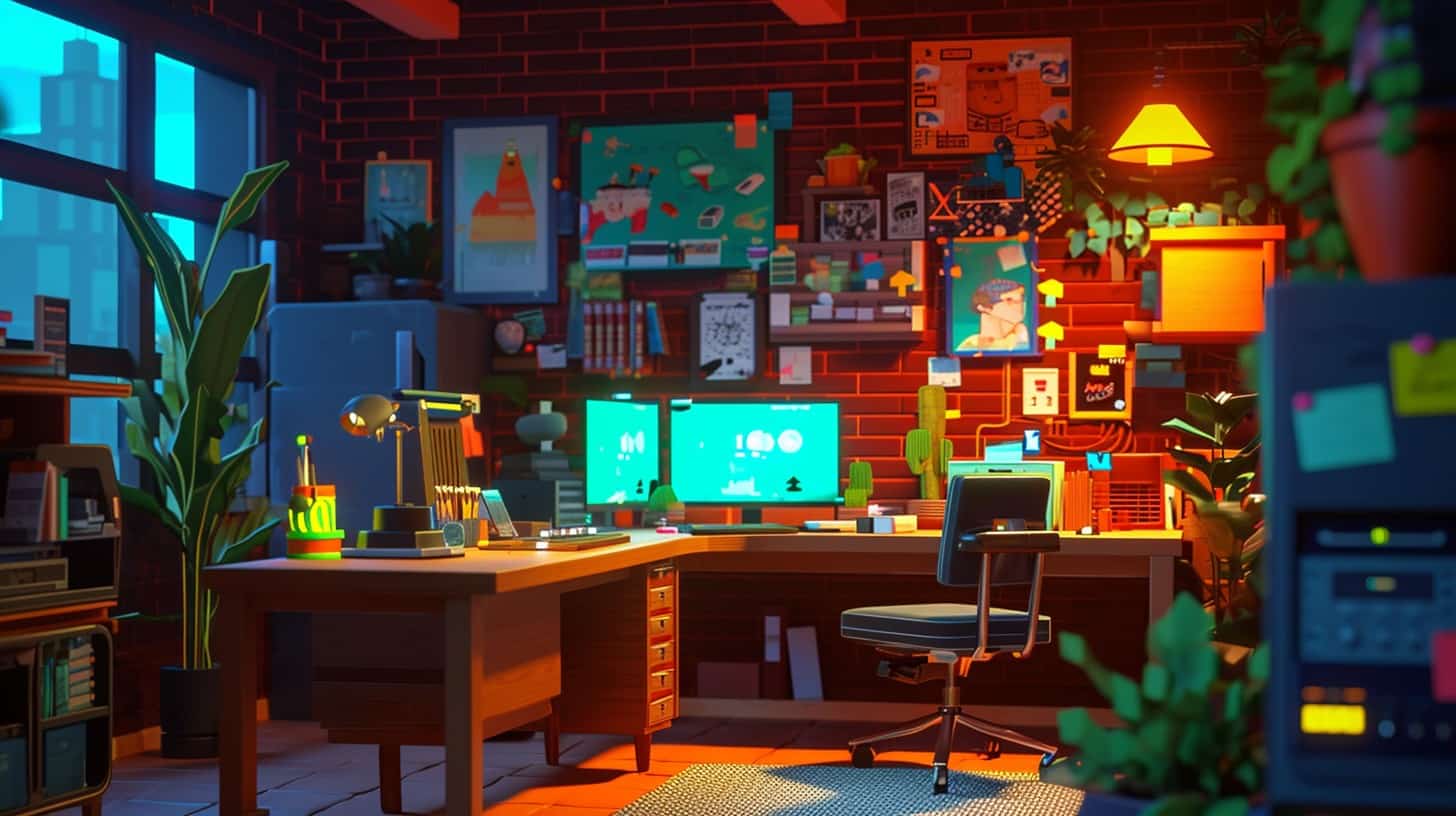Ever been swamped by the avalanche of big-budget video game releases and found yourself yearning for a more intimate experience? Believe me, I understand that feeling; it’s like seeking out a path less traveled in the gaming universe, where creativity blossoms unbound.
Think of this article as your personal guide through the enchanting world of indie games—a realm where small teams dare to dream without limits. Eager to uncover hidden gems far from the commercial gaming spotlight? Come along then, we’re about to embark on an adventure!
Key Takeaways
Indie games are video games created by small teams or individuals without big – budget support.
They often feature unique stories, art styles, and gameplay not typically found in major releases.
The cost of making an indie game can vary greatly, but usually involves tight budgets and personal funding sources like crowdfunding.
Indie games have gained popularity thanks to digital distribution platforms like Steam and the ability to share via social media.
Some well – known indie games include Minecraft, Journey, Cuphead, and Five Nights at Freddy’s.
Table of Contents
Definition of an Indie Game
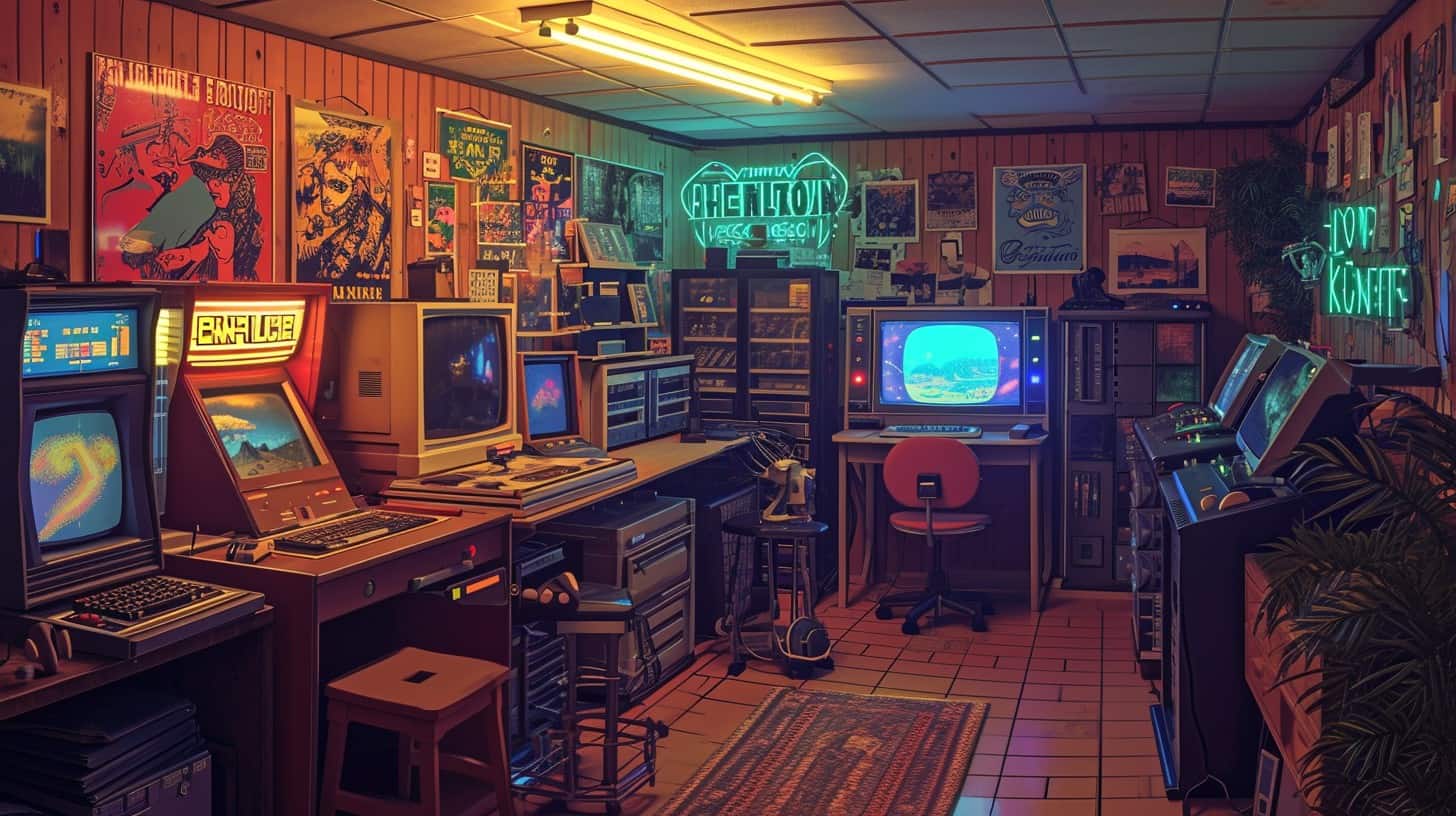
An indie game is a video game made by independent developers. These folks don’t have the big bucks like major game publishers do, so they often get creative and try new things with their games.
They could be just one person working on a passion project or a small group that comes together to make something unique. Usually, these games stand out because they’re different – they might tell special stories, show off cool art styles, or give you fresh ways to play.
Think of it like making homemade cookies instead of buying them from the store; there’s this personal touch that can make them even better sometimes. Indie developers enjoy the freedom to experiment and express themselves.
That means players like us get to experience all sorts of amazing games we might never see if only the giant companies were in charge!
History of Indie Games
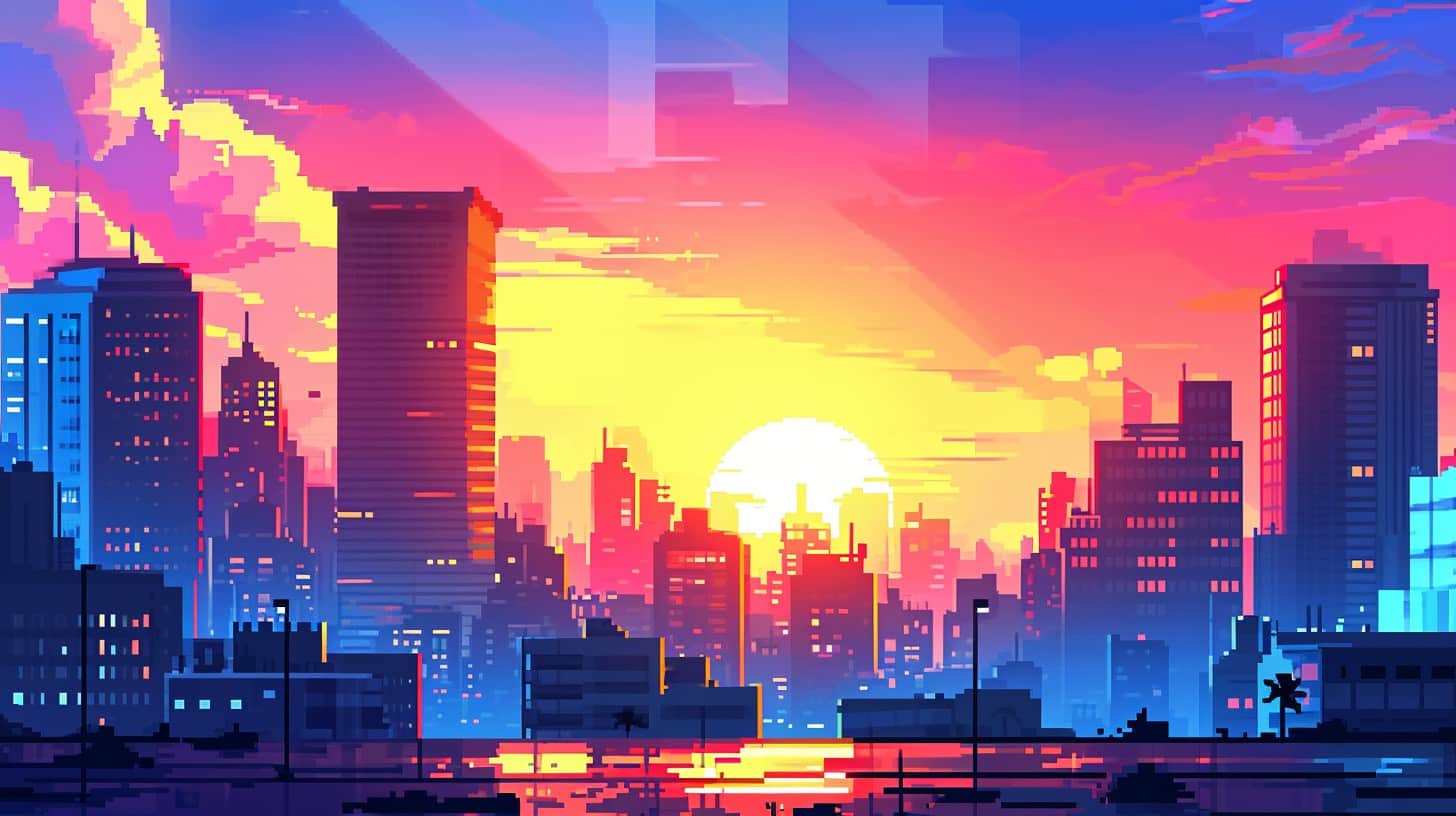
So, you’re curious about the roots of indie games, huh? Well, let me tell ya, it’s a story sprinkled with passion and DIY spirit that stretches back decades—think garage bands but swap out guitars for code and pixel art.
These trailblazers paved digital pathways long before ‘indie’ was even a thing; from the bedroom coders juggling floppy disks in the ’70s to today’s devs sharing their creations with millions online—each era shaping this quirky corner of gaming history.
BASIC and bedroom coders (1970s–1980s)
Back in the 70s and 80s, some awesome folks started making games right from their bedrooms. They didn’t have fancy equipment or big teams. Nope, just a computer, lots of ideas, and the BASIC programming language.
These cool creators taught themselves how to make games. It was a pretty new thing back then.
They’d spend hours typing away at their keyboards, working out puzzles and adventures you could play on screen. Once they finished a game, getting it out there was another challenge.
But they found ways! Some shared their creations in magazines or with clubs full of people who loved computer stuff as much as they did.
Their work lit the fire for indie game development – that’s making games without being part of a big company. Thanks to them, there’s this whole world of indie games now! That spirit of doing your own thing and dreaming up all sorts of wild game experiences? Yeah – that started with these early gaming trailblazers.
Shareware and chasing the console (1990s)
I remember the 90s like it was yesterday. That’s when shareware games started popping up everywhere. Developers would let us play a part of their game for free, and if we liked it, we could buy the full version.
It was pretty cool because you got to try before you buy.
At the same time, indie developers had big dreams about getting their games onto consoles like the Nintendo Entertainment System and Sega Genesis. They worked hard to get noticed by console manufacturers.
Games weren’t just for personal computers anymore; they were coming to our living rooms! And that’s how some indie games began sitting right next to titles from bigger companies.
Moving on from those days…
Rise of indie games from digital distribution (2000?2005)
So, let’s talk about how indie games really started to shine around the early 2000s. Back then, sharing games online was getting big. We saw something called “shareware,” and websites like GameSpy’s FilePlanet made it easier for gamers to find cool new stuff.
It wasn’t just about the big game companies anymore; smaller developers could get their games out there too.
Then came Steam in 2005, and boy, did it change things for indies! They created this place where lots of different games could be found and played easily. Thanks to them, a bunch of awesome indie titles got noticed by more people than ever before.
It was like suddenly these small-team creations were standing right next to the huge blockbuster games on virtual shelves—and that’s pretty darn impressive!
Shifting industry and increased visibility (2005?2014)
Wow, things really took off for indie games between 2005 and 2014. Valve came out with Steam software in 2005, and it was a game-changer—literally. This opened up a whole new world for indie developers to get their games out there without needing big companies or fancy stores.
Suddenly, people could download these cool, quirky titles right from home.
It wasn’t just about the tech; the whole scene around gaming started to shift. Social media became huge, and gamers were all over Twitter sharing their latest finds or streaming playthroughs on YouTube.
We also saw big hits like Minecraft explode onto the scene, which totally proved that you didn’t need a ton of cash or a massive team to make something epic that millions would love.
The playing field leveled quite a bit, giving small-time creators a shot at fame—and they sure took it!
Fears regarding saturation and discoverability (2015?present)
So, you’ve heard about the indiepocalypse, right? It’s this big worry that kicked off around 2015. People thought there were too many indie games popping up, and no one could make a profit anymore.
But guess what? The market didn’t crash and burn like some predicted. Still, getting folks to notice your game is tough with so many out there on platforms like Steam.
Now, here’s the deal: Making a game stand out is harder than ever. Every year, thousands of new titles flood in. I mean, it’s great that there are tons of games to choose from – who doesn’t love options? But for developers trying to get their hard work seen… well, it can feel like finding a needle in a haystack! And let me tell you, even if making games is super fun and all about passion, at the end of the day, we still need to pay our bills.
Indie Game Development
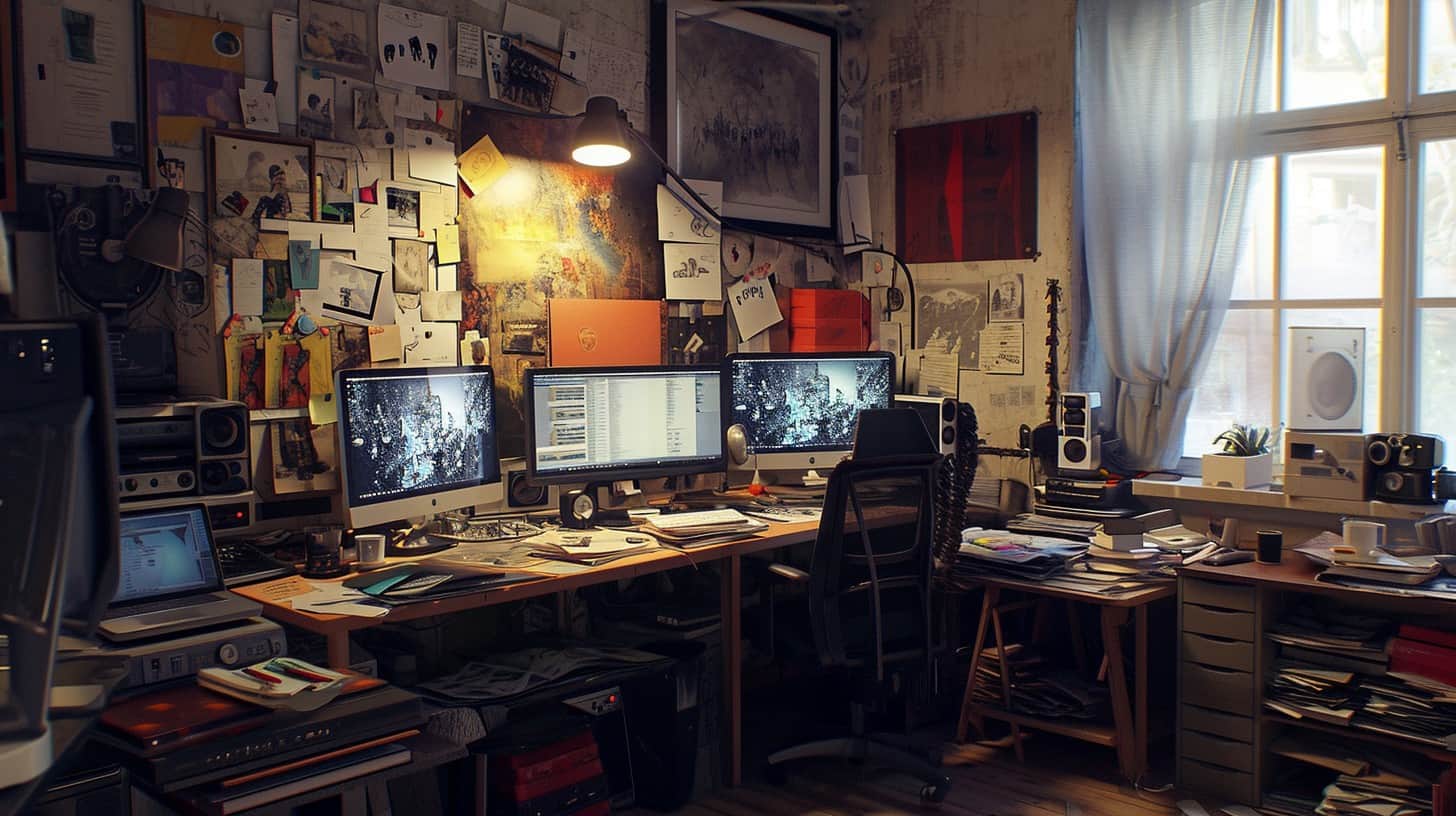
Oh man, indie game development—it’s like the wild west of creating video games. Imagine a bunch of creative folks with big ideas and laptops firing up engines to bring their pixelated dreams to life—minus the tumbleweeds and cowboy hats, unless that’s their thing.
Development teams
Making an indie game isn’t a one-person show. Sure, some solo whizzes do magic on their own, but most of the time, it’s a small crew of 2 to 10 folks grinding away (think Acme Games with their quirky titles like Quantum Conundrum).
They’re often a tight-knit bunch wearing many hats – coding one minute and composing music the next. Just picture a garage band jamming out hits; only these guys are crafting cool games instead.
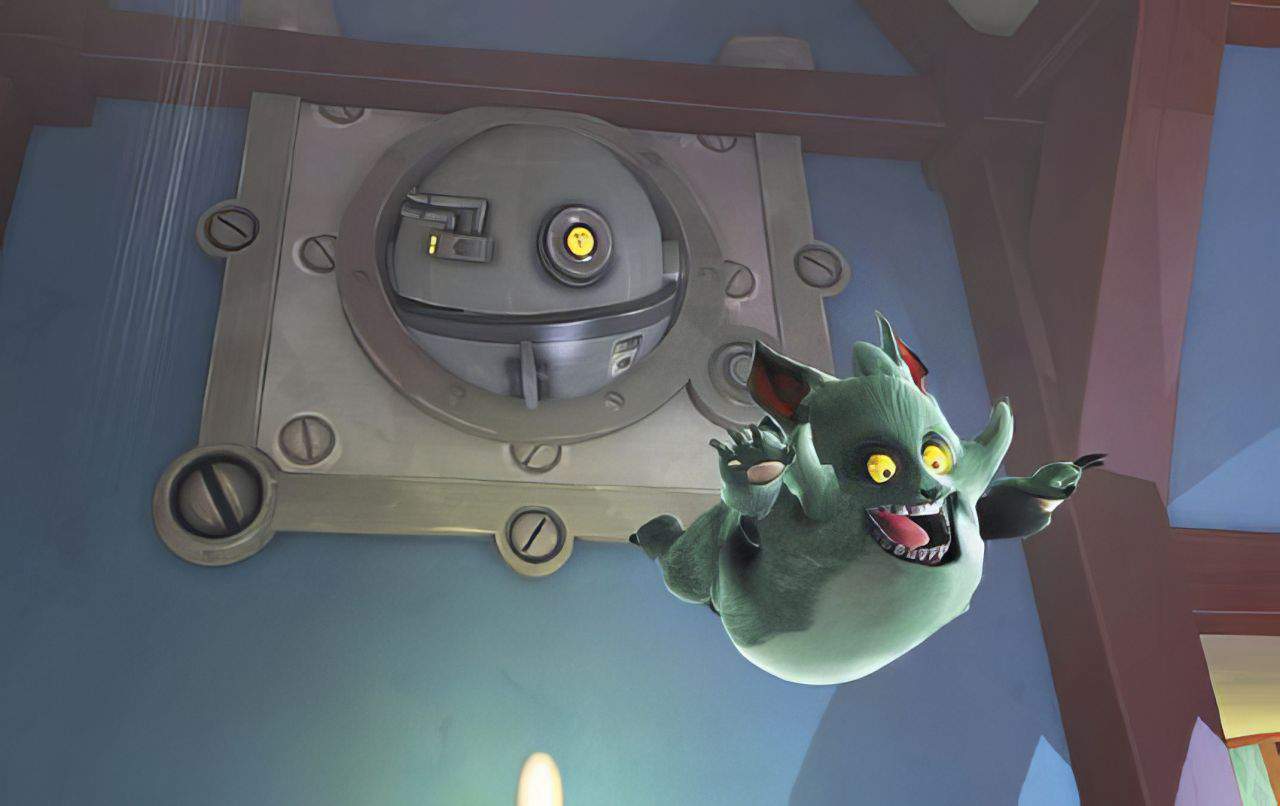
With indie development teams, every dollar counts. Salaries, licenses for game engines, and sometimes endless cups of coffee can rack up costs that reach about $1 million before anyone even plays their game! These passionate creators pour heart and sweat into each pixel without the deep pockets that big AAA studios have at their disposal.
And with smaller teams comes greater communication and flexibility to tweak those gaming gems right until they shine for players like you.
Development tools
So, we’ve chatted about the folks who make indie games, now let’s dig into the tools they use. Imagine having a magic wand that helps you create worlds, characters, and all the cool stuff in games—that’s what these development tools are like for indie game creators.
They tap into game engines like Unreal Engine or open-source wonders to build their dream games without breaking the bank.
These wizards of the gaming world often get sweet deals on top-notch software that big studios use, too. And guess what? Even console makers throw a bone to these underdogs by dishing out fancy software kits at friendly prices.
Thanks to this kind of support, making an epic indie game doesn’t have to cost an arm and a leg—just loads of talent and maybe a sprinkle of magic dust from your desktop computer!
Publishers
Let’s talk about the folks who help get indie games out there—publishers. You’ve probably heard of Raw Fury, Devolver Digital, Annapurna Interactive, Finji, and Adult Swim Games.
These guys are like gold for indie developers who have a great game but need extra muscle to share it with gamers like us. They step in to handle marketing and often bring a game to platforms and stores we might not reach alone.
You see, having a publisher can mean the difference between a game sitting unnoticed or becoming the next big thing. And recently, they’re even doing limited physical releases for console versions! That’s pretty sweet for collectors or anyone who loves having a tangible copy on their shelf.
It shows that powerful support goes beyond just digital; it’s about making an impact wherever players love to play.
Funding
After figuring out who might publish an indie game, the next big step is getting the money to make it. I’ve seen lots of ways folks can find cash for their games. Some save up from other jobs or get help from their family.
Others might take a chance with bank loans or get some investors excited about their idea.
Crowdfunding websites like Kickstarter are super popular too—people pitch their game and others chip in if they think it’s cool. And hey, some countries even give grants to help developers create awesome games! But here’s the thing: making a game isn’t cheap at all; you’re talking about shelling out dough for everything from paying your team to putting ads out there, so people hear about your game.
And let me tell ya, earning that money back isn’t always a walk in the park. A lot of indie games don’t pull in more than $4,000 after launch – that’s less than what a used car might cost! Even with different ways to make money like selling the whole game upfront or having special in-game stuff you can buy, only some games hit it big while tons of others struggle just trying to break even.
It’s kind of like throwing a party and hoping enough people show up—and bring snacks!
Distribution
Getting indie games into players’ hands is a big deal. Since finding a publisher can be tough, many devs go for digital distribution. Think platforms like Steam or the Humble Bundle – they’re like online shops where you can find all sorts of cool indie titles.
Back in the day, selling games was harder because everything was physical, and you needed someone to make and move all those game boxes.
The game changer? Online stores made it easier to share indie games with the world. Sure, there’s a bit of crowd in these digital spaces now, but hey, more choices for gamers! Plus, making some noise on social media or getting featured by streamers can help a game stand out.
I’ve seen many hidden gems get discovered this way – it’s all about catching that spotlight.
The Popularity of Indie Games
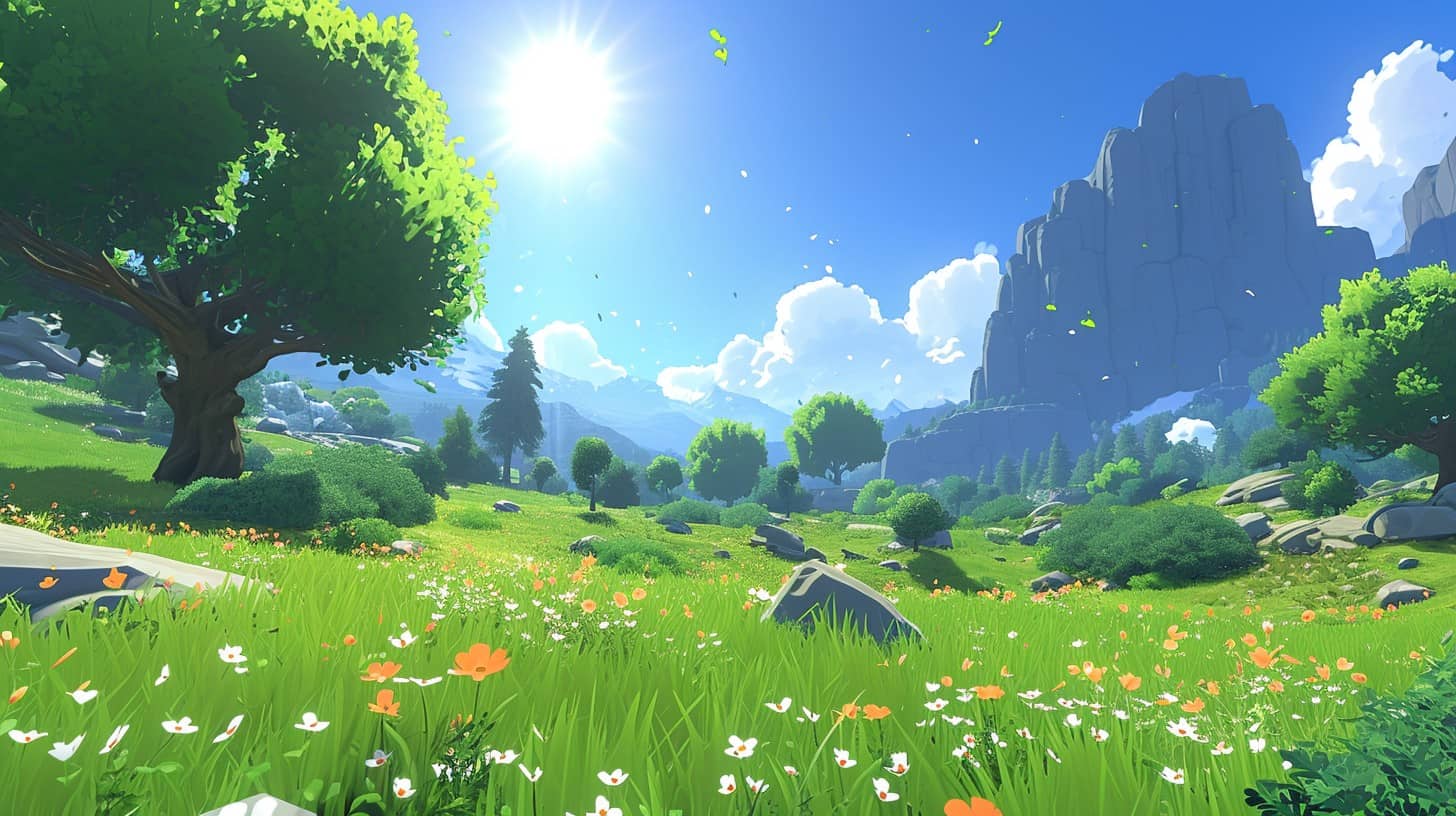
Indie games have really taken off, and I see why. They’re like a breath of fresh air with their creative ideas and bold chances on new types of gameplay. Big-time game companies often play it safe, but indie developers aren’t afraid to mix things up! Lots of players out there love this about indie games.
You might notice that indie games seem to be everywhere these days. Social media influencers and cozy gaming nights are buzzing about them. Steam’s got tons of them, too! It’s no surprise they’re popular; they offer something special that you might not get from huge AAA titles—it’s like comparing a crafty homemade pie to a store-bought one.
Sure feels nice to support the underdog creators who pour their hearts into making these cool little gems!
Pros and Cons of Developing an Indie Game
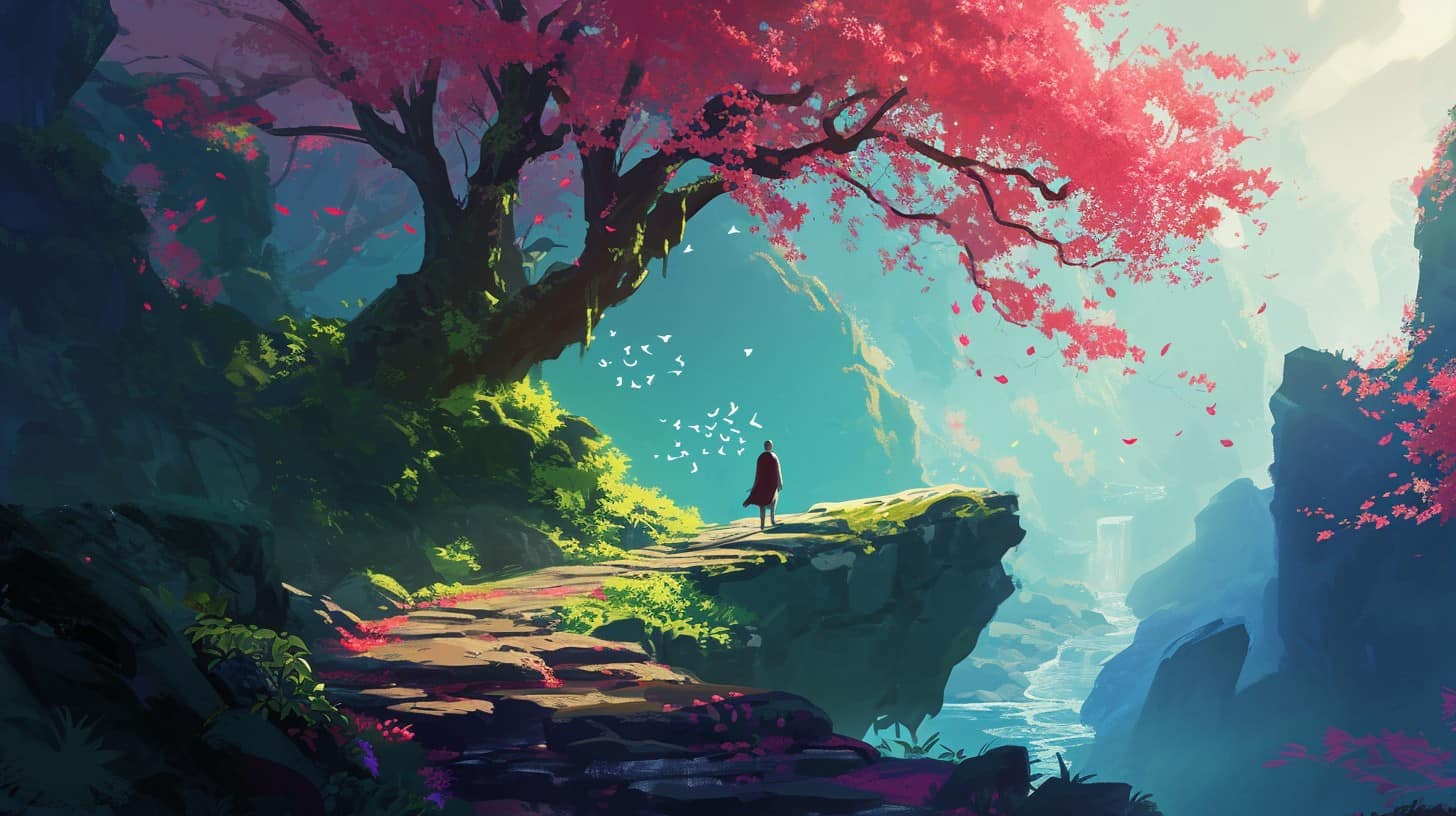
Hey fellow gamers! I’m here to chat about the ups and downs of making an indie game. It’s a wild ride full of freedom but also challenges.
- First off, you get to call all the shots. You can make the game you’ve always dreamed of without anyone saying no.
- Money can be tighter, though. Without a big company behind you, you have to watch your budget closely.
- You feel like a superhero when players love what you’ve made. There’s nothing like seeing folks enjoy your hard work.
- Still, getting noticed is tough. With so many games out there, it’s hard for yours to stand out in the crowd.
- Working on your own time rocks! You set your own deadlines and work at your pace.
- But being on your own means wearing lots of hats – coding, art, music, it’s all up to you or your small team!
- When it comes to cash, sometimes you hit gold with great sales or crowdfunding. It shows that people believe in your idea before it’s even out there.
- On the flip side, the costs can sneak up on you – from software tools to unexpected glitches that need fixing.
- Teamwork makes the dream work in indie games! Collaborating with friends or online pals brings fresh ideas and energy.
- Yet sometimes it gets lonely when you’re grinding away by yourself for long hours.
AAA Game vs Indie Game: Understanding the Differences
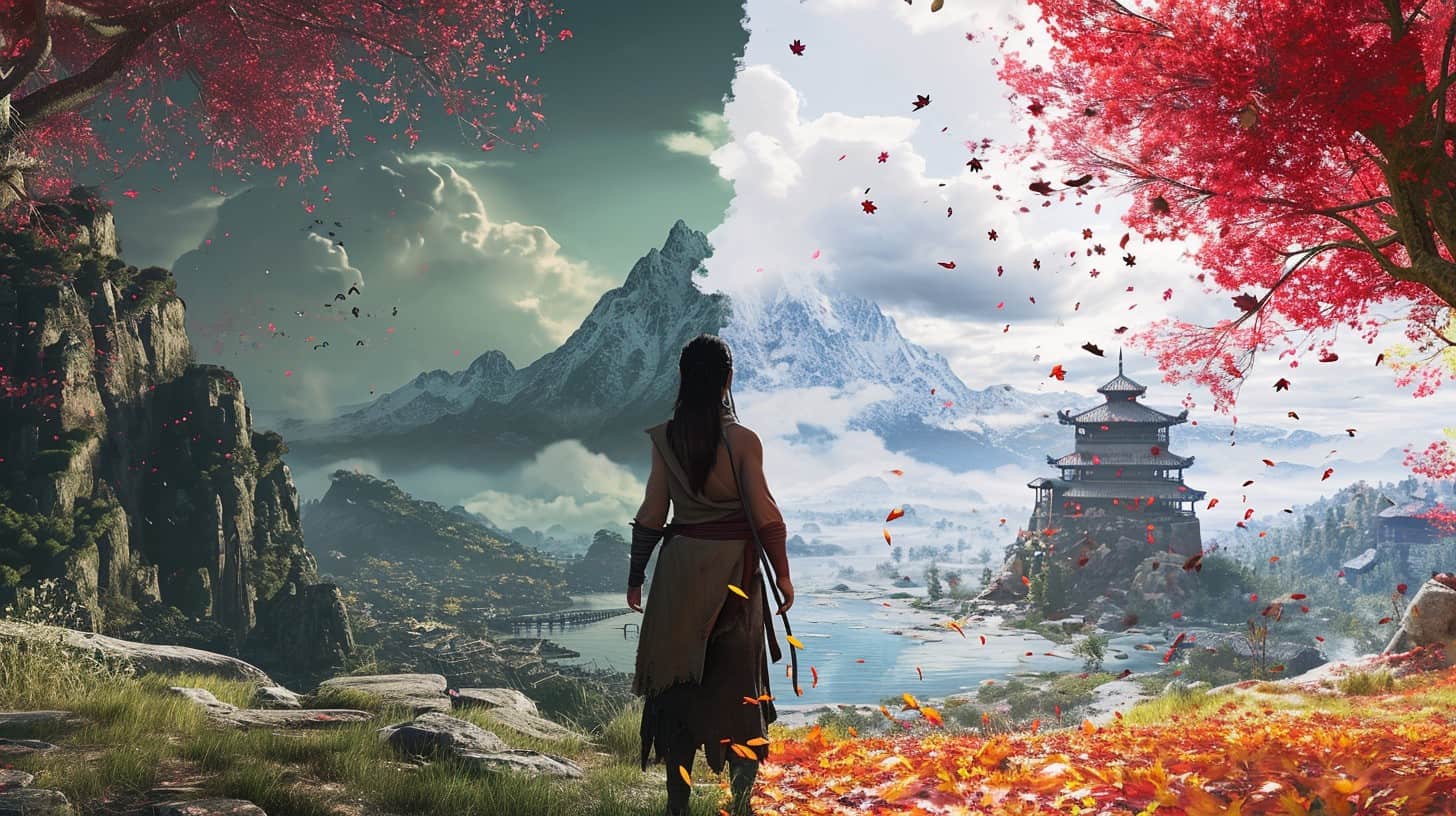
Alright, let’s dive into the nitty-gritty of AAA vs indie games. It’s like comparing blockbuster movies to indie films. Both have their charm, but they’re worlds apart in creation and spirit.
| Aspect | AAA Game | Indie Game |
|---|---|---|
| Budget | Massive, often in the millions | Usually much smaller, sometimes bootstrapped |
| Development Team | Large teams with specialized roles | Small teams, often multitasking |
| Marketing | Extensive campaigns and media buzz | Grassroots or social media-based |
| Publisher Involvement | Backed by major publishers | Self-published or small indie publishers |
| Risk and Innovation | Typically lower due to commercial pressure | Higher, often pushing creative boundaries |
| Development Time | Several years, with extensive testing | Varies, can be shorter with more agile development |
| Gameplay Focus | Often mainstream and genre-specific | Unique, experimental, or niche experiences |
| Financial Goals | High sales to recoup investment and make profit | Often more modest, focused on sustainability |
Remember, it’s not just about size and money. It’s the heart and soul behind the games that set them apart. Indie developers pour their passion into every pixel, while AAA titles aim to fill our screens with blockbuster thrills.
Now, shifting gears, let’s consider the financials and what it actually takes to get an indie game off the ground…
The Cost of Creating an Indie Game

Making an indie game isn’t cheap. Sure, the price can go all the way up to a million bucks! That’s because you have to pay for a bunch of stuff. We’re talking about what goes to the team making the game, cash spent on getting it out there at gaming events, and legal stuff like licenses and taxes that you just can’t skip.
Plus, marketing isn’t free either—if people don’t know about your game, they won’t buy it.
And don’t forget outsourcing—sometimes you need experts from outside for music or art. Every buck counts when you’re an indie developer wearing lots of hats. It might seem like a mountain of costs before seeing any return, but hey, creating something awesome that gamers will love? Priceless.
Next up: let’s find out which indie games have won players’ hearts big time!
Top 5 Most Popular Indie Games
You’re probably sitting there, thinking, “What in the world does ‘indie’ even mean when it comes to games?” Let me tell you—it’s like uncovering a treasure trove of creativity and innovation! I’ve dived deep into the pixel-filled universe to bring you a sneak peek at some indie titles that have completely rocked our digital worlds.
And oh boy, do these gems pack a punch! We’re talking about the crème de la crème of indie delights; games that have left players everywhere utterly gobsmacked with their originality and charm.
But hey, don’t just take my word for it—keep on reading to get the lowdown on these game-changers that prove why video games aren’t just a pastime but an art form.
Minecraft
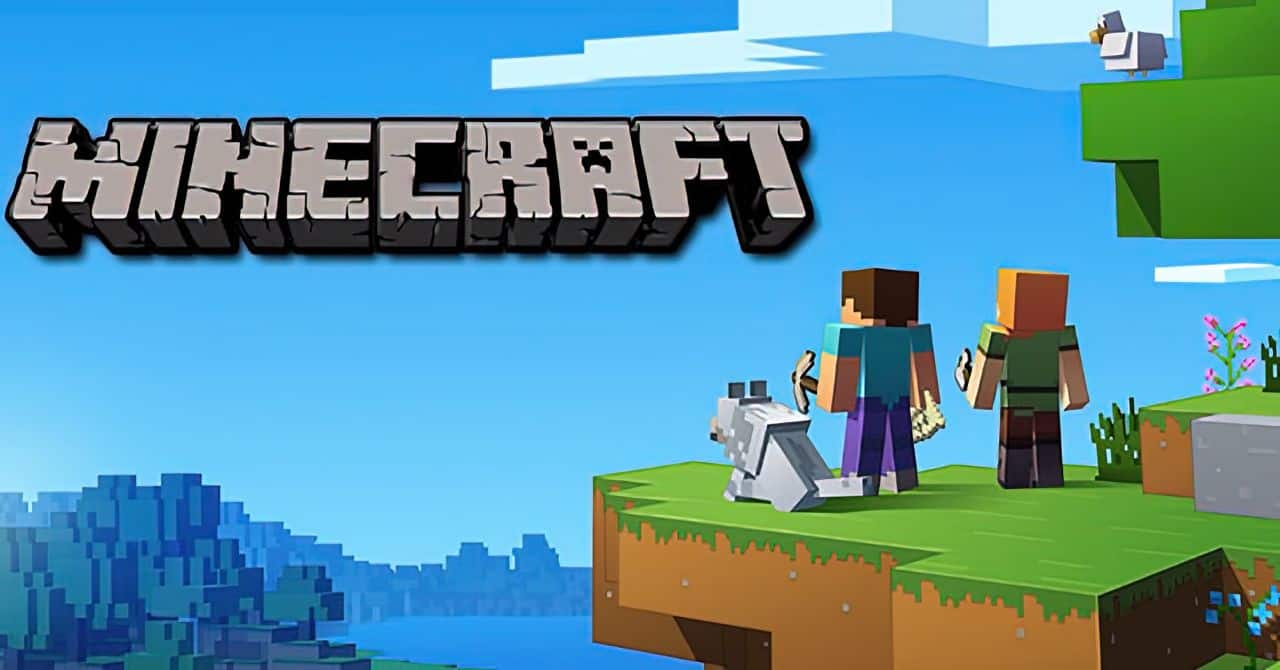
I’ve got to tell you about Minecraft, the game that started off as a small indie project and exploded into the best-selling game ever. It’s wild how it began – just one developer named Markus Persson, also known as Notch, and his company Mojang.
They created this blocky adventure where you can build anything, fight monsters, or just explore an endless world.
Now imagine this: millions of players all over the globe digging into Minecraft every day. It’s not just for fun—it sparks creativity and brings folks together in amazing ways. Whether on your computer or tapping away on a mobile device, there’s no denying the massive impact it’s had on gaming and pop culture.
And get this: what once was indie is now legendary!
Journey
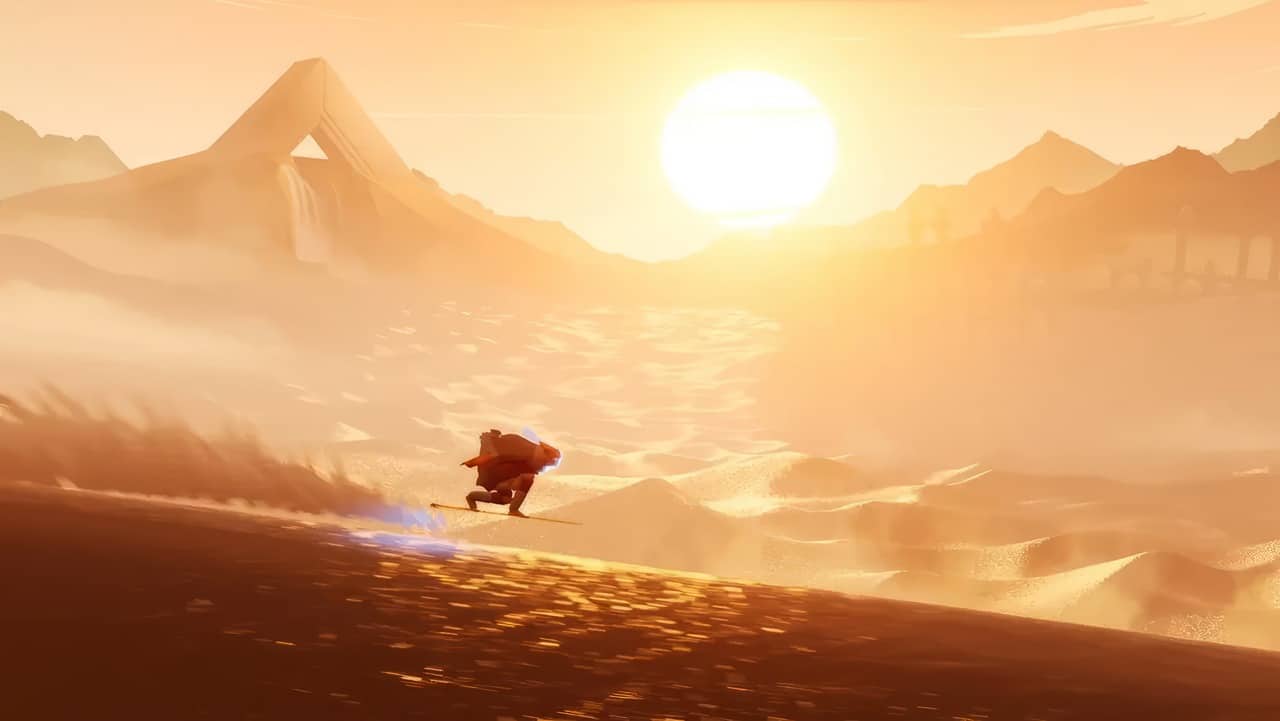
So, Journey is this unique game that kind of breaks the mold. Developed by thatgamecompany, it’s got a cool story. Even though a big-name publisher was involved, people still see it as an indie game.
It’s like they had enough freedom to keep their indie spirit alive, you know? You play as this robed figure on a massive desert adventure with stunning visuals and music that hits you right in the feels.
Playing Journey is more about feeling than doing – it’s all about the emotions and experiences along the way. You glide across sands, explore ancient ruins, and meet other players without ever talking to them.
Sounds weird but trust me; it makes sense when you’re in there! They nailed something special here—a game where every part just fits together perfectly to create one unforgettable trip.
Cuphead
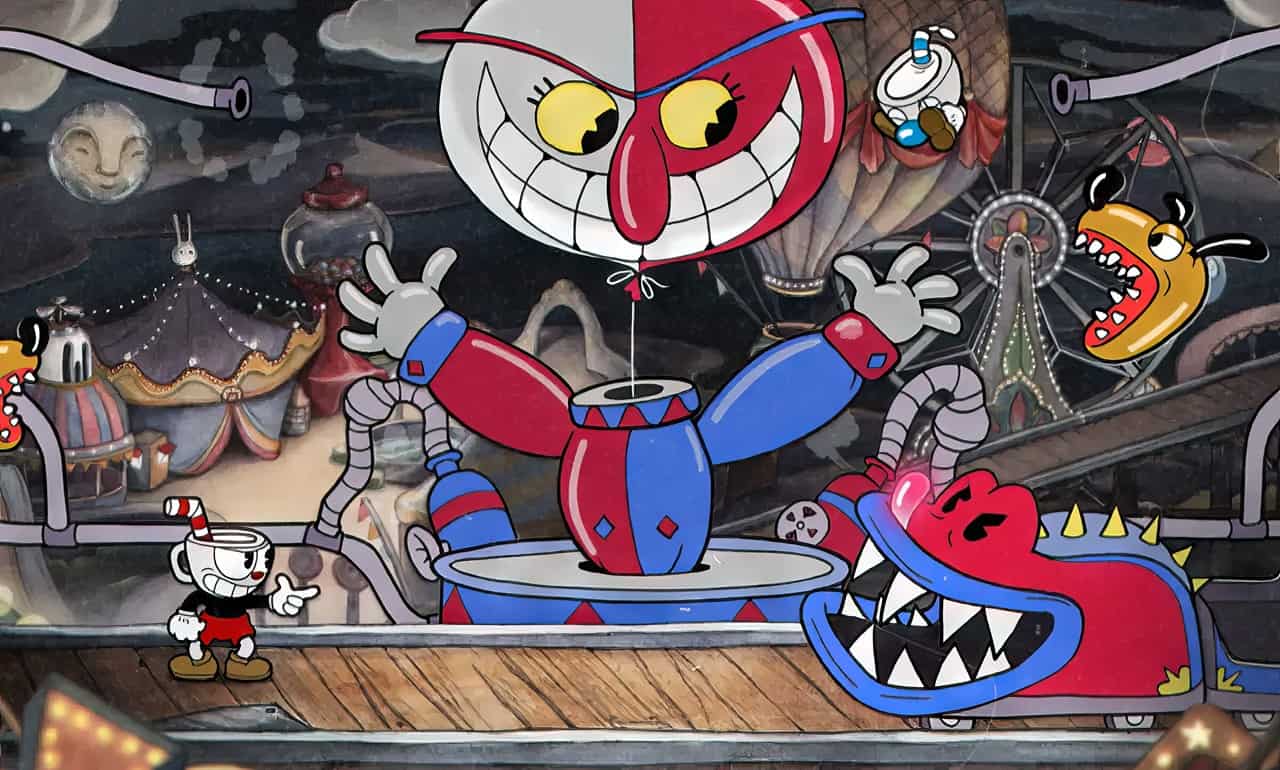
Moving from the tranquil world of “Journey,” let’s jump into something a bit zippier—Cuphead. This game is like stepping right into a 1930s cartoon, with everything hand-drawn and bouncy.
The colors pop, and the jazz music gets your toes tapping! I’m telling you, it’s not just fun to look at; it’s tough, too. You play as Cuphead or his pal Mugman, running and gunning through levels that will test your reflexes big time.
Fights against bosses are wild rides where every second counts. And guess what? Each villain looks like they marched straight out of an old-timey animation reel. They’re clever, tricky, and each one has a bunch of moves you’ve got to learn if you want to beat them.
Even though it might make you wanna toss your controller sometimes, when you finally win… man, that feeling is golden!
Five Nights at Freddy’s
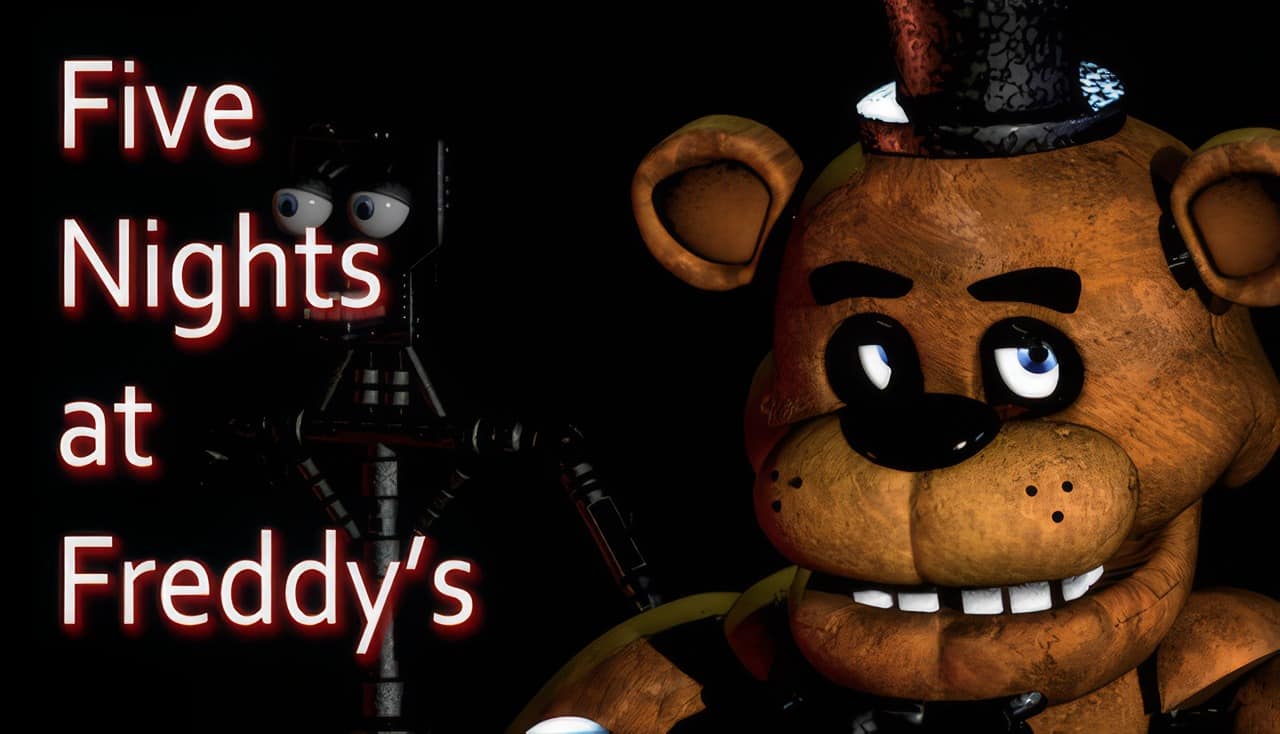
So, let me tell you about this game that has a lot of people on edge—Five Nights at Freddy’s. It’s super popular and for good reason! You’re stuck in a creepy pizza place where these weird animatronic creatures want to get you.
Your goal? Just make it through five nights without being caught by them. Sounds easy, right? But trust me, it’s all about keeping your cool while these guys roam around.
Here’s the kicker—it’s not just some simple hide-and-seek. You’ve got cameras to check, doors to close, and lights to manage. And there’s this crazy twist: power is limited! If you use too much… well, things get really interesting in the dark with those animatronics sneaking up on you. The tension is wild! What’s awesome is how Five Nights at Freddy’s shows us indie games can be simple yet totally nail-biting — proof that huge teams and big bucks aren’t always needed to create something memorable.
Letters: A Written Adventure
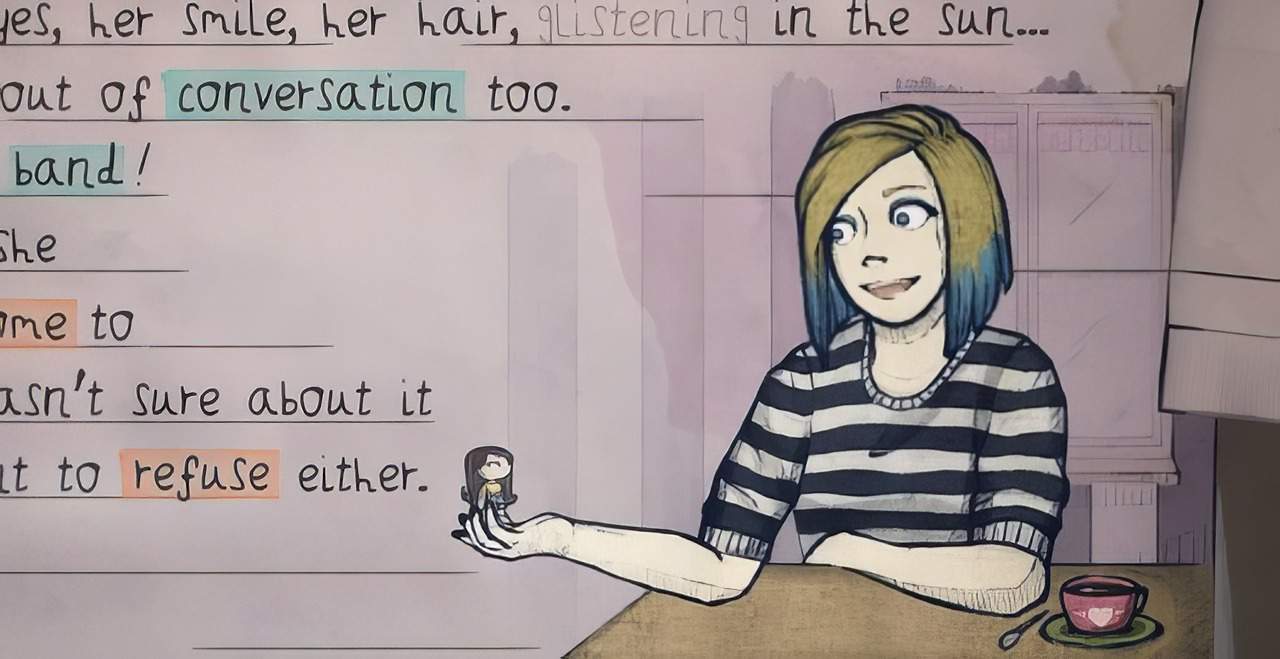
Moving from the scares in Five Nights at Freddy’s, let’s dive into something a bit different. “Letters: A Written Adventure” is an indie game that charms you right off the bat. You play as Sarah, using words to hop through her life story.
It’s like jumping inside a diary and being able to shift everything with just a pen stroke.
In “Letters,” it feels like each word matters—a lot! You can pull them out of notes and messages to solve puzzles and change how things go for Sarah. The cool part? Your choices actually shape the tale as you go along, making it your own unique adventure every time you play.
It’s pretty neat when games give us that kind of creative freedom!
Who is an Indie Developer?

I’m talking about the folks who make games in their own unique way. An indie developer is someone with a passion for creating video games, but they do it solo or with a small group.
- They don’t have big money from game publishers behind them.
- Indie developers often do many jobs – designing, programming, and even marketing their games.
- Many use online platforms like Steam Greenlight or crowdfunding sites to get their games out there.
- Some teach themselves how to make a game using resources from the internet or books.
- Tools like Unity or Unreal Engine are popular choices because they’re powerful and not too costly (or even free).
- Developers share early versions of their games to get feedback; these are called demos.
- They might work on other jobs while making their game, so progress can be slow but steady.
- Often these creators have close ties with fans, since they depend on them for support and word-of-mouth advertising.
Team Composition To Create Indie Games

Ah, the indie game dream team! Think of them like a garage band—each with their own instrument, jamming out to create something totally unique. They’re the heart and soul behind those gems we just can’t stop playing, each bringing their own flair to the “stage.” There’s no “I” in team, but in indie games…
there’s definitely an “indie!” Want to dive into who makes up this creative crew? Keep on reading.
Game Designer
Ever play a game and just can’t put it down because the world is so cool, or the puzzles make you think in a whole new way? That’s all thanks to the game designer. They’re like the brains of the operation.
These folks come up with how a game works—the rules, story, and challenges that get us hooked.
Imagine having an awesome idea for a game—you’d want to share it with others, right? Well, that’s what indie game designers do! They don’t just follow what big companies say; they bring their own creative visions to life.
Sure, they might not have piles of cash or fancy software at first, but that doesn’t stop them from making games we love and remember.
Artist
So, we’ve talked about the brains behind the game design. Now, let’s chat about the folks who splash color and life into these games – the artists. They’re like magicians, you know? With a few strokes and clicks, they turn plain ideas into visual feasts that stick with us long after we finish playing.
Artists in indie games have this superpower to go wild with their creativity. There are no big bosses saying “do this” or “change that.” Instead, they get to play around with styles until they find something that just feels right for the game.
And when it does, boy does it shine! Their artwork isn’t just pretty pictures; it tells stories and builds worlds that can tug at our heartstrings or send shivers down our spines. Plus – get this – if gamers dig the style enough, artists can whip up some slick merch to sell on the side! How cool is that?
Programmer
Now, once the artist breathes life into characters and worlds with their art, it’s up to me, the programmer, to make everything work. I dive deep into code and create a kind of digital magic that turns static images into playable parts of a game.
Writing code isn’t just about making things move on screen, though; it’s also fixing bugs, so players don’t get stuck or frustrated.
I sometimes wear multiple hats, too—debugging one minute and beta testing the next—to ensure every level plays as intended. You can think of programming like putting together an intricate puzzle, where each piece is a line of code that must fit perfectly for the entire game to come alive in your hands.
It’s a huge responsibility, but hey, seeing someone enjoy what I’ve coded makes all those hours worth it!
Sound Engineer
I’ve got to tell you, being a sound engineer in indie game development is like being a wizard with sounds. These folks take noises and turn them into something pretty magical that changes how we feel when we play games.
Imagine hearing clinking coins, roaring dragons, or even the soft footsteps in a spooky hallway – that’s all thanks to sound engineers.
They get creative without spending tons of money and still make everything sound top-notch. And the cool part? Since indie teams can be smaller, they often get to experiment more than they would on big-budget games.
It’s not just about making noise; it’s about crafting an experience that pulls you right into the game world. Sound matters big time in video games, and these engineers help transform our gaming moments into something unforgettable.
Tester
So, let’s talk about the heroes who ensure our indie games run smoothly and are fun to play: testers. These folks dive into the game deep before anyone else gets a chance. They’re like the brave explorers of gaming, finding bugs and glitches that could ruin your day if they weren’t caught in time.
Testers bring their own unique skills to the table, looking at every corner of a game with fresh eyes—sometimes squeezing into spots even developers didn’t know existed! Their feedback is pure gold; it shapes how a game evolves from an idea to something you can’t put down.
Now imagine launching your homebrewed game without this vital safety net—that’s asking for trouble. Testers aren’t just playing; they’re dissecting gameplay, minding the user experience, and offering tips on making everything more awesome.
Behind almost every smooth gaming session I’ve ever had lies a tester’s hard work—making sure each jump, puzzle or battle feels just right. And let me tell you, when indie games hit big (think “Among Us” by Innersloth), it’s often thanks to these unsung champions catching those pesky issues early on!
Advantages and Disadvantages of Indie Game Design

Hey fellow gamers, let’s talk about indie game design. It’s got its ups and downs, but it’s a blast for those who dive in. Here’s the lowdown on what makes it cool and what can be tricky.
- I get to create whatever world I dream up. No big bosses are telling me what to do, which means total creative freedom.
- Building an indie game doesn’t need a lot of cash. Small teams work too, so less money stress.
- We might find fans who really dig our unique games. This can make a tight-knit community that loves what we do.
- Experimenting is my jam! In indie games, I can try out wild game mechanics and wacky art styles.
- Sometimes we hit it big with special stories that only small teams would take a chance on.
- Not gonna lie, making these games isn’t always smooth sailing. A skinny budget means we might run into some tech snags.
- Finding folks to fund us can be like looking for a needle in a haystack. It’s tough to get the dough to bring our ideas to life.
- Standing out is super hard with so many games out there. We gotta shine bright, or we’ll just blend in with the rest.
Top 10 Most Interesting Indie Games 2024
Ready for a fresh dose of indie goodness? This year, the little guys are packing big punches. I’m talkin’ about indie games that have more charm and challenge than you can shake a joystick at.
No regurgitated ideas here—each one’s like finding your new favorite hole-in-the-wall café: unique, full of personality, and totally unforgettable. From quirky puzzle-solvers to heart-tugging narratives, these top 10 picks for 2023 are gonna knock your pixel-loving socks off!
Spiritfarer
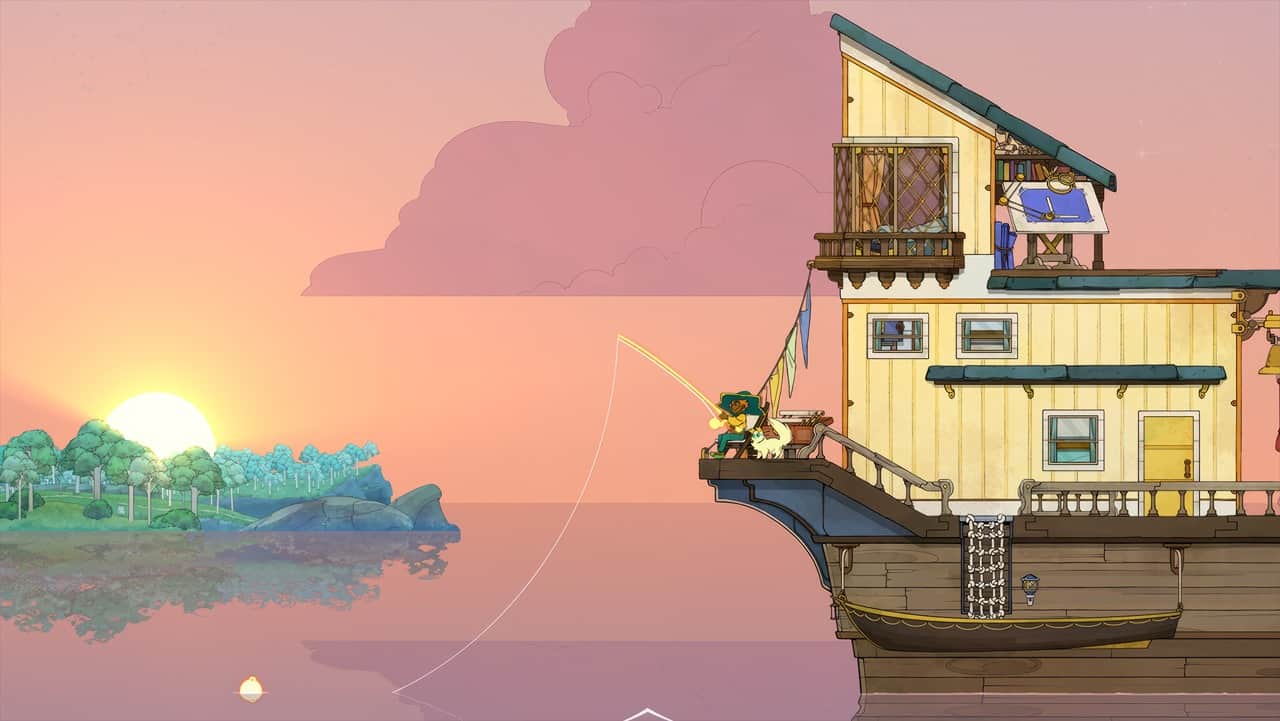
Let me tell you about Spiritfarer. It’s a game that stands out in the indie world this year. You play as a ferry master to the deceased, and your job is to make sure these spirits get where they need to go.
But it’s not just about guiding souls; it’s about caring for them on their final journey.
Now, I’ve played tons of games, but Spiritfarer? It hits different. The game feels personal, like the developers really poured their heart into it. Every spirit has its own story that tugs at your emotions—and let me tell you, some parts are tear-jerkers! Players say they feel close to the characters because every interaction feels meaningful.
And isn’t that what indie games are all about? Connecting with players on a deeper level? That’s what makes Spiritfarer shine among other titles this year.
Coffee Talk
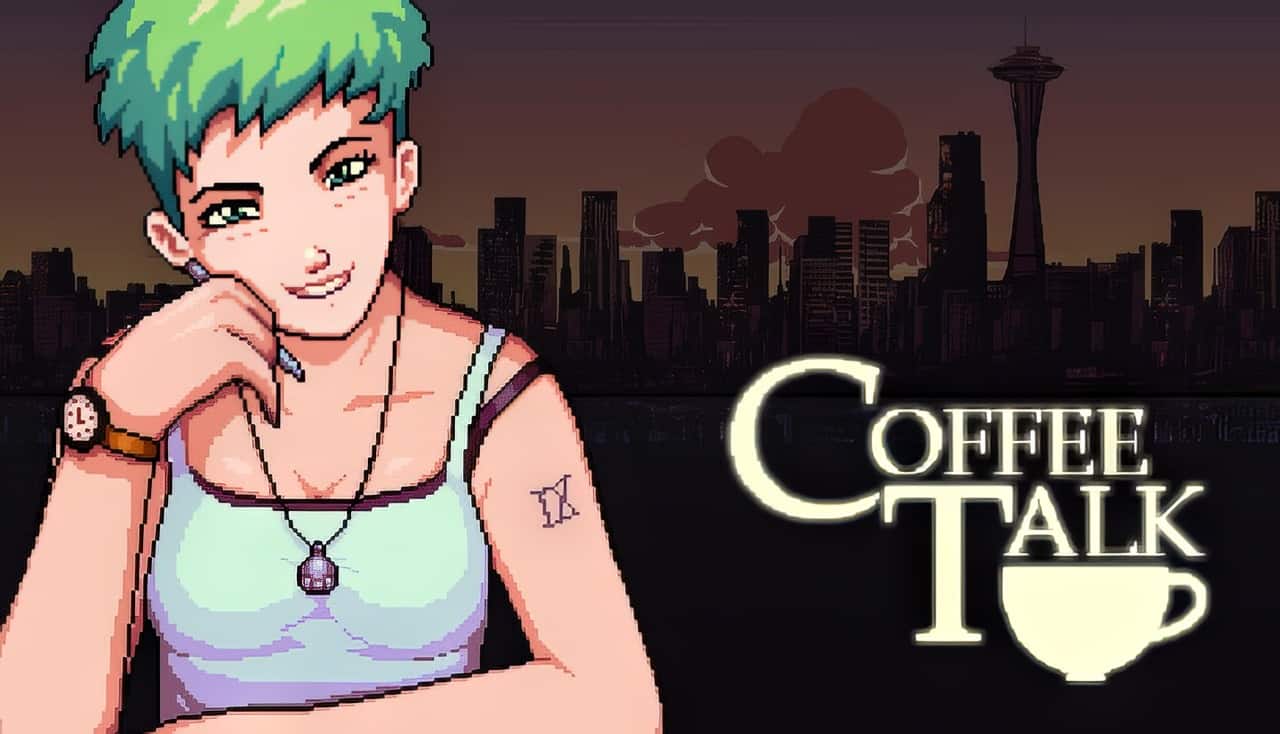
Moving from the heartwarming experiences of “Spiritfarer,” I stumbled into another unique world, this time in “Coffee Talk.” Picture this – you’re up late at night, running a bar where folks come for more than just coffee.
They want someone to listen to them, someone who cares. That’s where you step in. You mix drinks and give advice to an array of interesting characters, each with their own stories.
It’s pretty calming and makes you feel like a part-time bartender and part-time counselor.
What really stands out is how the game lets you dive deep into conversations that are about life’s ups and downs—just as much as they’re about finding that perfect blend of beans.
And hey, squeezing in some healthy gaming habits isn’t too hard when playing feels more like hanging out with friends than battling bosses or racing against the clock.
Fall Guys: Ultimate Knockout
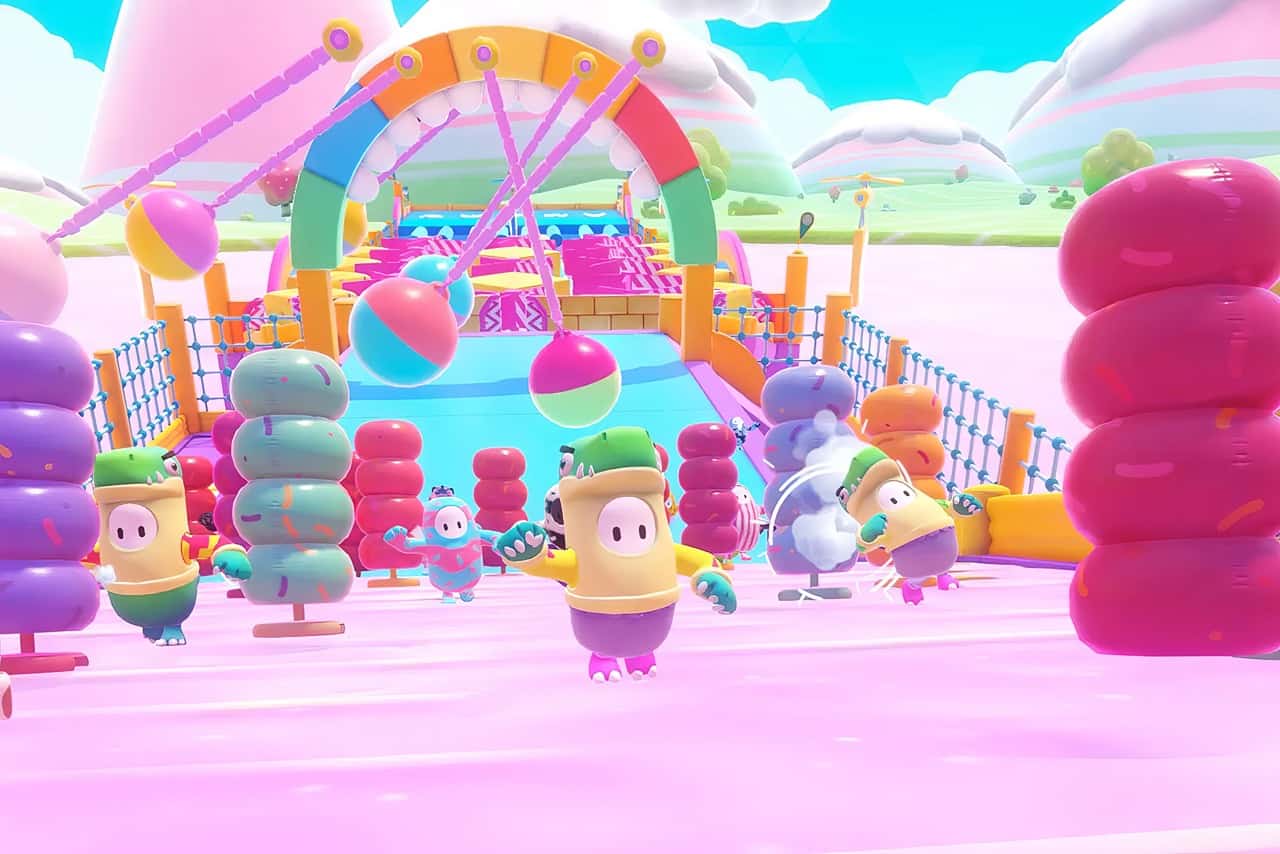
Oh boy, let me tell you about Fall Guys: Ultimate Knockout. It’s this wild and wacky game where you play as a jellybean-looking dude trying to win crazy obstacle courses. Imagine running through bouncy castles and dodging giant fruit — that’s the sort of fun I’m talking about! The cool thing is, it’s an indie game, so the folks who made it are all about putting out something they really love instead of just trying to make big bucks.
That freedom means they could get super creative with Fall Guys. They focus on making everything high-quality and throw in ideas no one has seen before. It paid off big time because now everyone knows about this game! It shows what independent developers can do when they mix imagination with passion for games.
And honestly, playing Fall Guys feels like being part of a community that celebrates those indie spirits who dare to dream up something different.
Sable
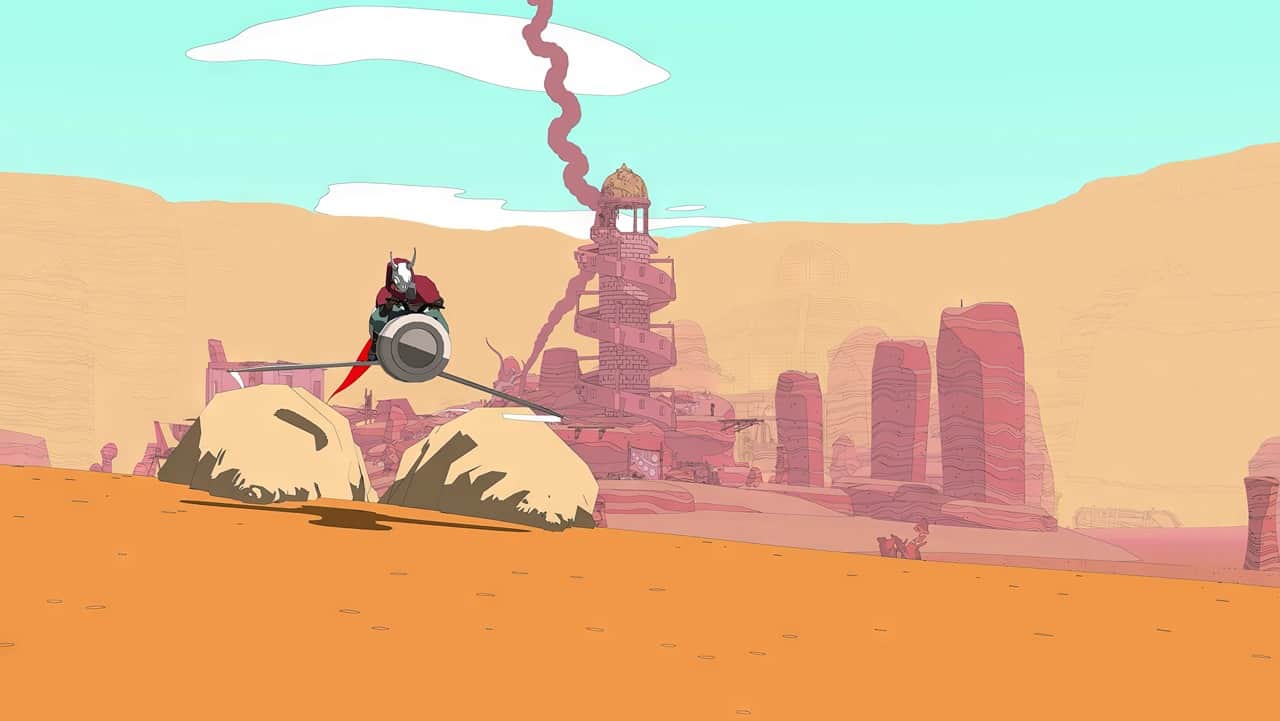
From dodging obstacles in Fall Guys to exploring vast deserts, Sable is a whole different ball game. This indie gem takes you on an adventure where every dune tells a story. You hop onto your hoverbike and whoosh—you’re off! In Sable, it’s all about the journey, not just reaching the end.
This game shows us that taking risks can lead to amazing things. It doesn’t have the big money or huge team like AAA games do. But that didn’t stop its creators from crafting something special.
With only a few people and some smart thinking, they brought Sable’s world to life for us to enjoy. You download it online since you won’t find it in physical stores—this is how indie games roll!
Hades
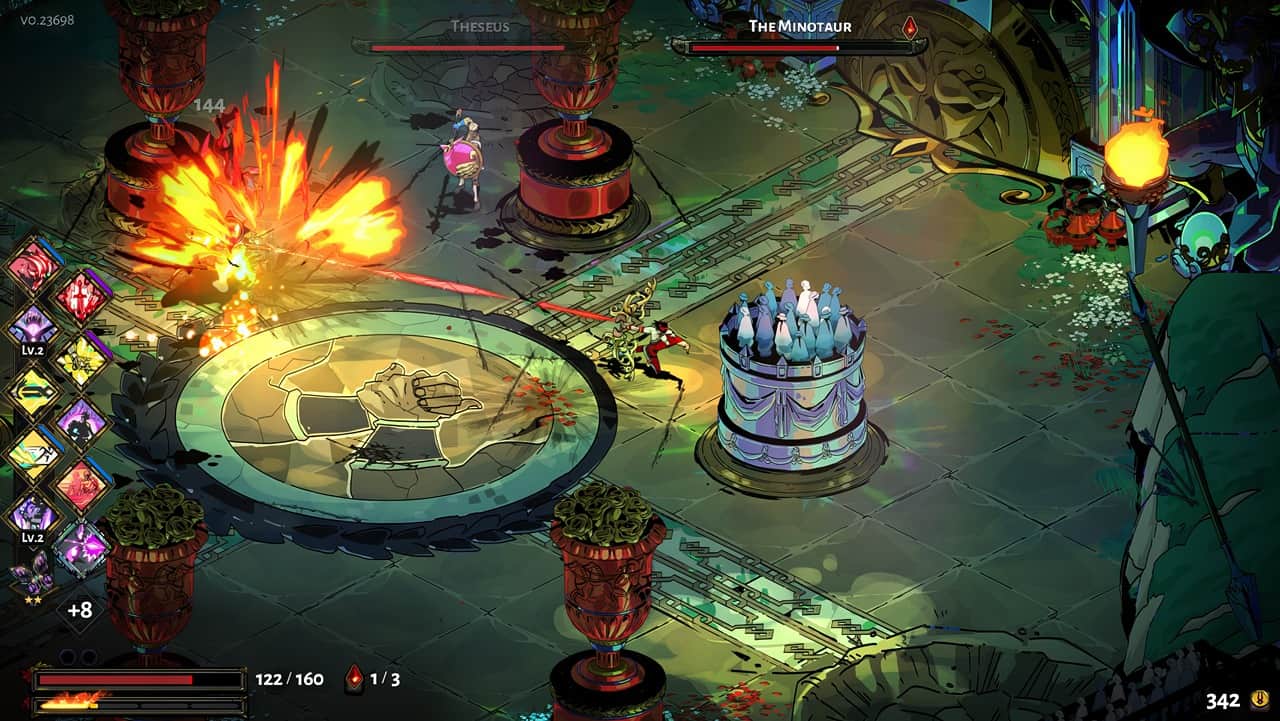
So, let’s talk about Hades. Man, this game really packs a punch with its deep questions and themes. It’s like it looks right into your soul and asks you what you’re all about—your plans, hopes, the whole shebang.
And boy, does it get us thinking! For an indie game to stir up that kind of reflection is pretty awesome.
Diving into Hades also means signing up for a tough ride. You’ll fail—a lot—but that’s part of the fun. Each defeat teaches you something new, and before you know it, getting knocked down becomes another step on your journey to victory.
This isn’t just any game; making waves as one of 2023’s most interesting indie titles goes to show how independent games can rock the gaming world just as hard as the big-name releases.
Way to the Woods
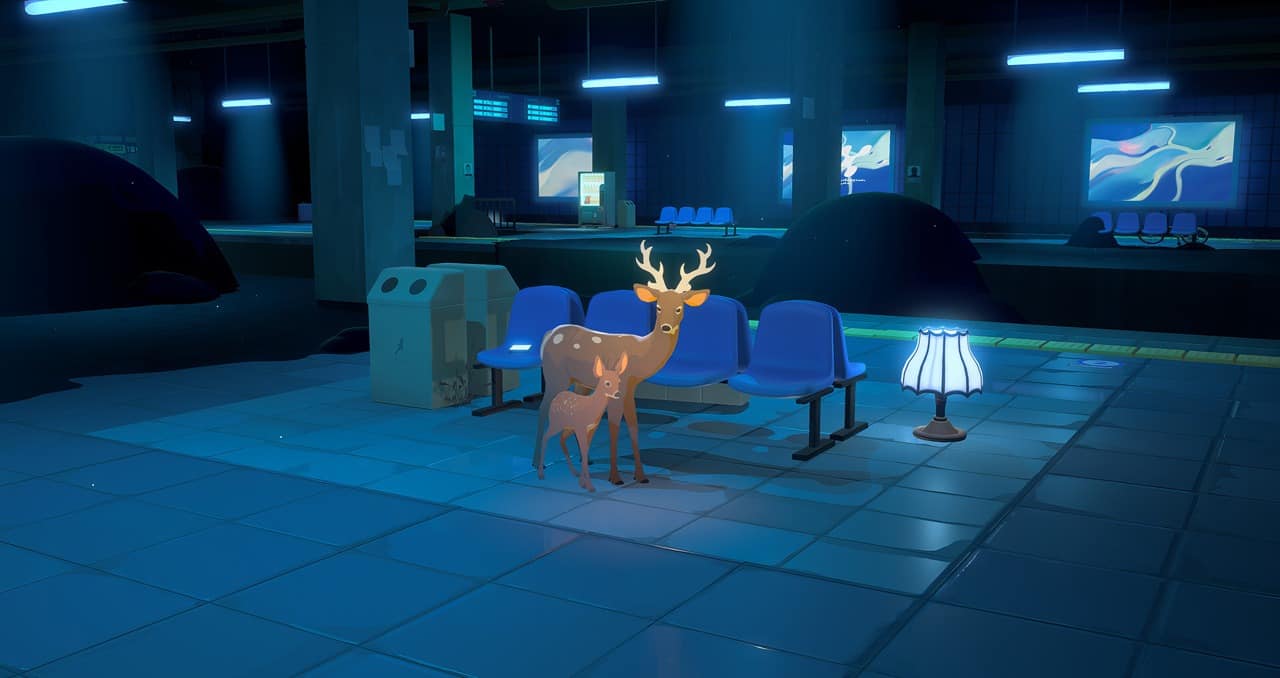
Have you heard about “Way to the Woods”? It’s on the list for top indie games this year, and I’ve got to say, it’s pretty unique. You get to be a deer—yes, a deer!—and its fawn.
Together, you explore places that feel both haunting and beautiful because, well, no humans are around anymore. It’s all about figuring out this world that seems familiar but is actually full of secrets.
I love how “Way to the Woods” makes me think and feel at the same time. The whole deal with navigating through an empty world gets kind of eerie sometimes. But then there are moments when sunlight breaks through the trees, or you find something surprising.
That stuff sticks with you long after playing. This isn’t just another game; it challenges what we expect from stories in games—and I can’t wait to see where those two deer will lead me next!
Among Us
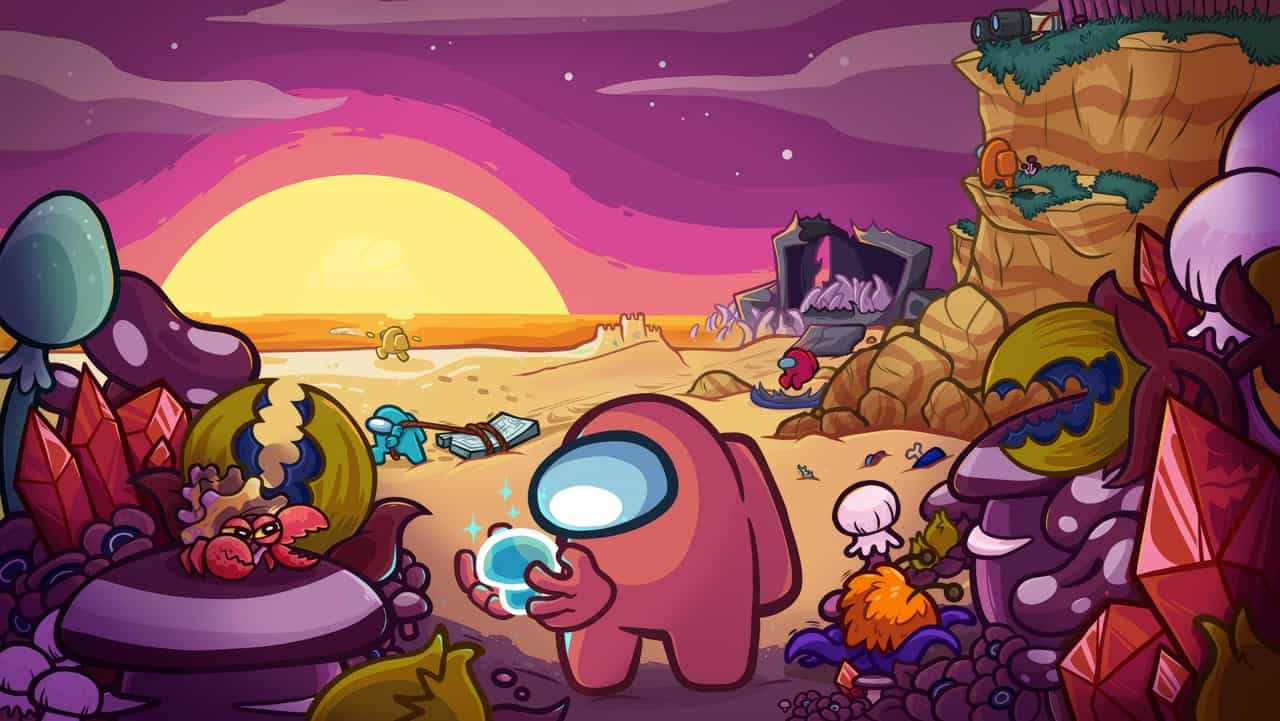
So, let’s talk about “Among Us“. This game has really caught everyone’s attention. It’s one of those indie games that make you think, “Wow, who needs big studios to have fun?” You jump into this spaceship with other players, and it’s like playing hide and seek but with a twist—some of you are impostors trying to sabotage the mission! It’s super cool because anyone can be the bad guy; it keeps you guessing.
I’ll tell ya, playing Among Us feels like being in an exciting movie where trust is thin and tension is thick. You’re there trying to complete tasks or cunningly taking out crewmates without getting caught.
I’ve spent nights with friends laughing and accusing each other; it’s just epic game night material right there. And guess what? It was made by a small team at Innersloth—who says indie games aren’t as good as triple-A titles? They sure proved ’em wrong!
Ooblets
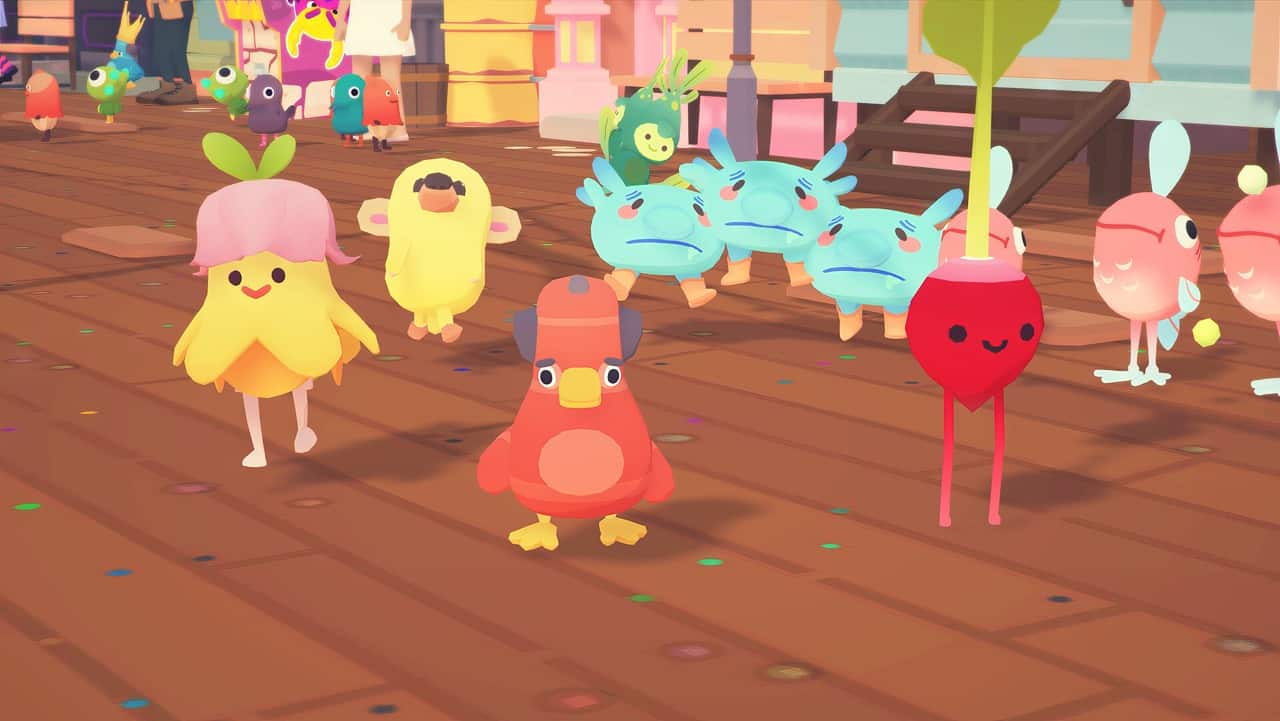
Ooblets is like a breath of fresh air in the indie game world. Picture this: farming, creature collection, and dance battles all rolled into one super-cute package. You’ve got these little creatures called ooblets that you raise on your farm, and when they’re not helping with the crops, they’re showing off their moves in dance-offs against other ooblets.
It’s fun, it’s quirky, and totally grabs your attention.
You can’t help but get hooked as you explore this colorful world full of oddball characters and adorable ooblets. Every day brings something new—planting funky plants or decking out your house and character to show your style.
Indie games come in all shapes and sizes, but Ooblets stands out with its unique blend of gameplay elements that fill up my gaming nights with pure joy.
Moving on from the charming fields of Ooblet farms…
The Falconeer
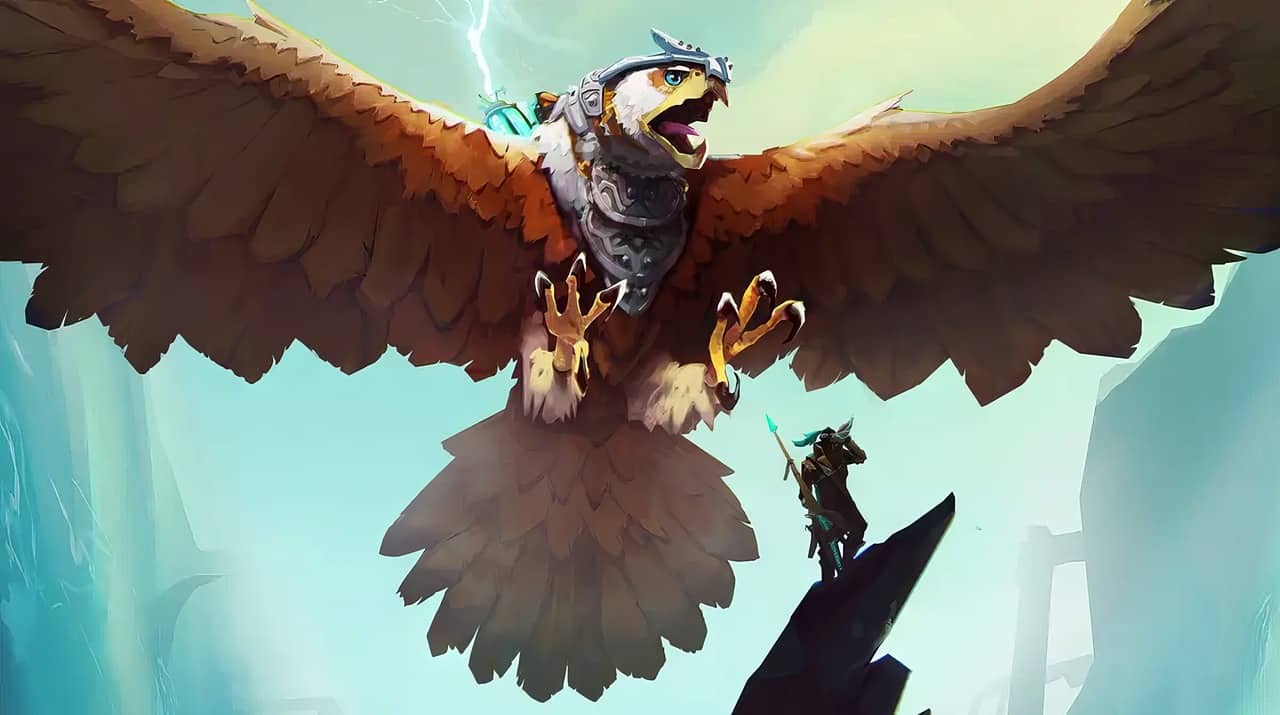
Moving from the quirky world of Ooblets, I’ve got to tell you about The Falconeer. This game is all about flying on the back of a giant bird and duking it out in the skies. It’s not your everyday role-playing game, since you’re up there swooping and shooting instead of wandering around with a sword.
They really thought outside the box with this one.
Marketing for games like The Falconeer can make or break their success. You won’t just stumble upon it; these creators have to shout from the rooftops to grab your attention. And guess what? It works because here I am talking about it! If they get creative with how they make money—think cool in-game stuff you can buy or even neat t-shirts—that’s often what keeps them flying high without falling into obscurity.
12 Minutes
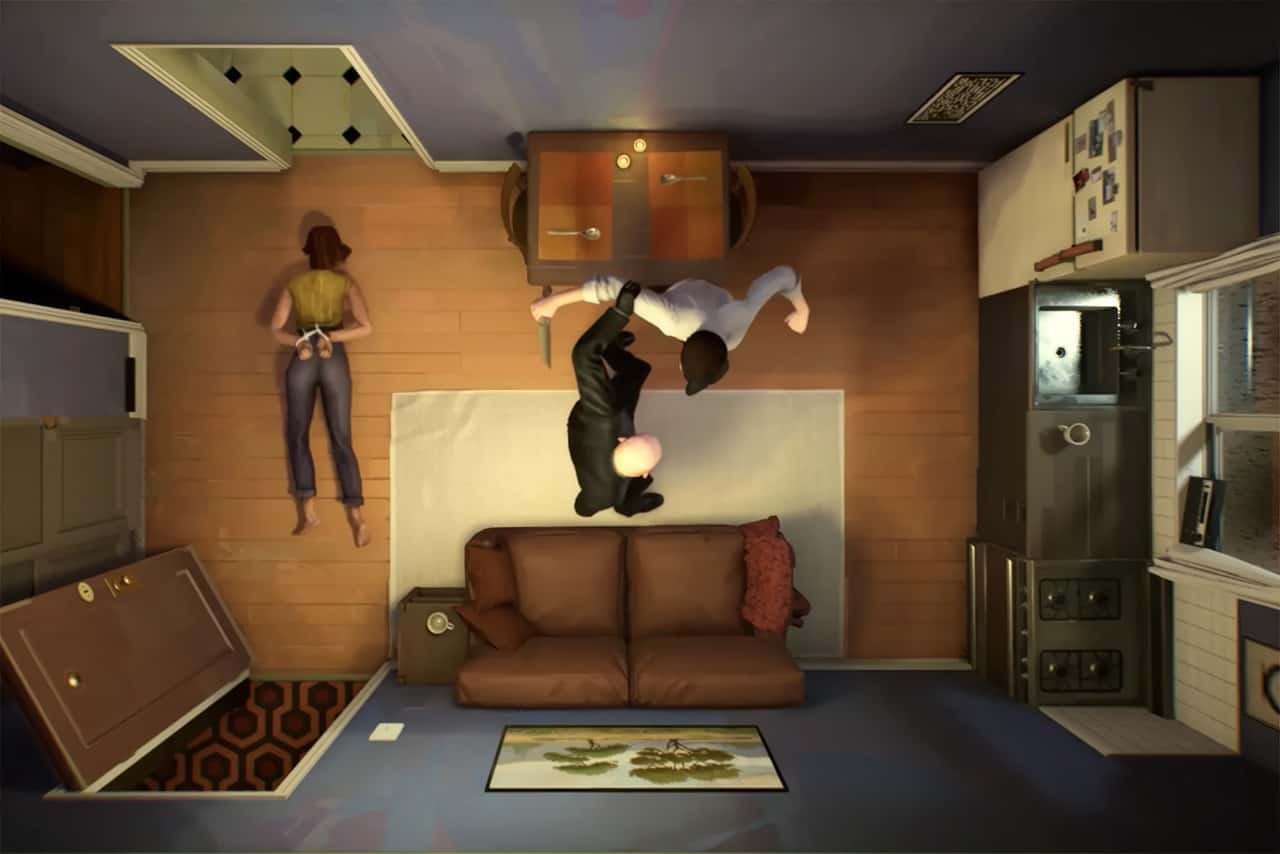
So, have you heard about “12 Minutes”? It’s this indie game that has everyone talking. Imagine being stuck in a time loop, sounds pretty wild, right? You’re just living the same 12 minutes over and over.
The cool thing is—it’s all about the choices you make and piecing together clues from each loop to change the outcome. This game really shows why indie titles are special because they dive deep into mechanics and storylines.
“12 Minutes” shines by doing things differently from big budget games; it sticks to what makes gaming fun—challenge and a solid plot to keep your brain buzzing. And just think about how its uniqueness landed it on 2023’s most interesting indie games list! Now let’s talk team composition for creating awesome games like these.
Embracing the Indie Gaming Revolution
Okay, let’s wrap this up! Indie games are truly special—made with heart, packed with creativity, and often outshining the big guys in pure fun. They’re like a homemade meal; maybe not as fancy as restaurant stuff, but oh so satisfying.
Dive into indie gaming and who knows? You might find your next favorite game or even get inspired to create one yourself! Keep playing, keep dreaming—it’s what makes the gaming world go round.
FAQs About Indie Games
What’s an indie game, anyway?
An indie game is like a homemade cookie in the video game world – it’s made by independent studios or developers, not big companies. These creative folks use their own ideas and often work with smaller budgets to bring fun games right to your computer or console!
Can I play indie games on my phone or computer?
You bet! Indie games are everywhere – you can play them on mobile phones, personal computers, and even some of those obscure video game consoles gathering dust in the attic.
Are these games any good compared to the big hits?
Absolutely! Ever heard of “Limbo” or “Castle Crashers”? They’re like hidden treasures that’ll make your video game night epic. Plus, they prove that video games aren’t just a waste of time; they’re little nuggets of genius!
So, do these indie creators get help making their dreams happen?
Yep! These passionate indie-game studio stars might crowdfund their project or run a quirky ad campaign to scare up some cash… And voilà!—they’ve got enough dough for development kits and maybe even some pizza.
Wasn’t there something called Xbox Live Arcade? Is that for indies too?
Oh, yeah—the Xbox 360 had this cool place called Xbox Live Arcade, where loads of indie gems shined bright alongside bigger titles (think Braid and Geometry Wars). It was like finding your new favorite snack at a giant food fair!
Do indie developers ever hit it really big?
For sure! Take Scott Cawthon, who whipped up “Five Nights at Freddy’s,” right from his home office—or Edmund McMillen’s wild ride with “Super Meat Boy.” Boom—a paycheck that brings more than just ramen money into their wallets!
